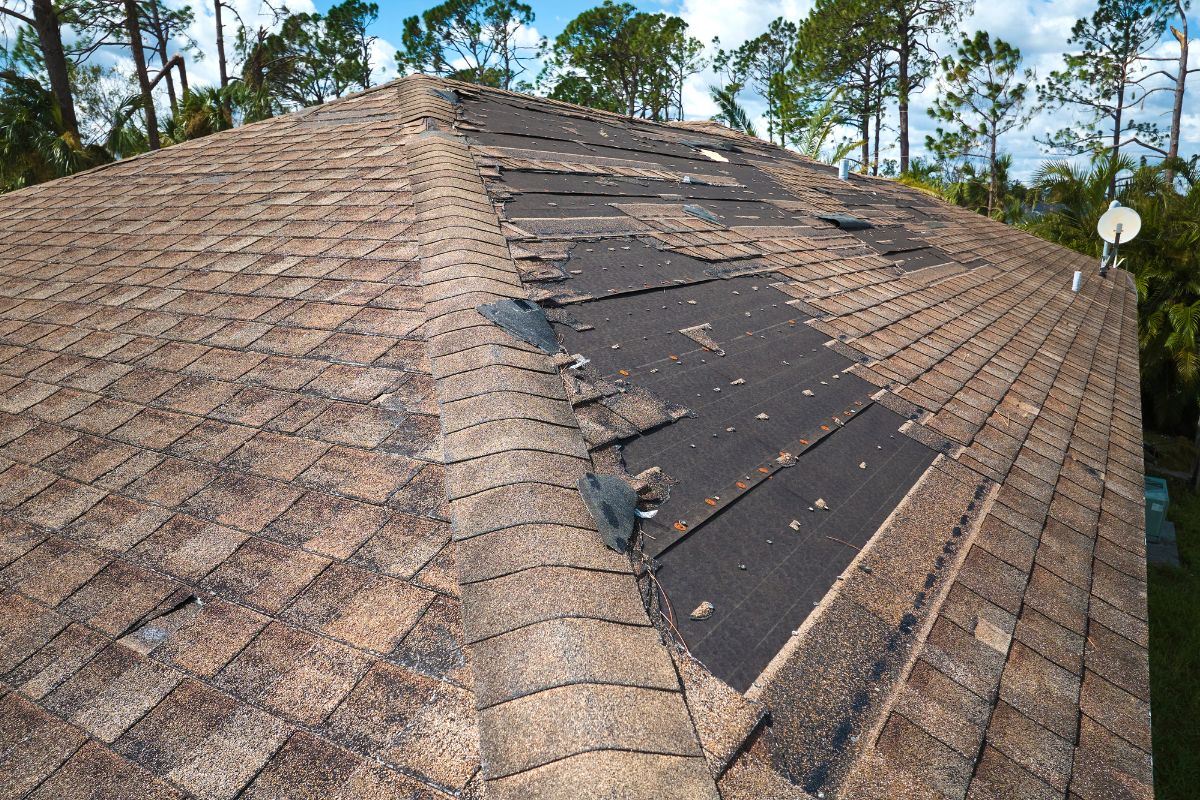The Impact of Monsoon Season on Roofs
Monsoon storms are unpredictable and often intense. Winds can exceed 50 mph, rains can fall in torrents, and hail can strike with significant force. These storms can loosen shingles, damage flashing, and expose underlying roofing materials to water. If you are situated in a monsoon-prone area, you are probably accustomed to it, but there are some things you should be careful about.
In desert climates, where monsoon storms are common between June and September, roofs face additional challenges. Extreme heat can weaken roofing materials, making them more susceptible to damage when storms hit. The combination of prolonged sun exposure and sudden weather changes can degrade the integrity of the roof, increasing the likelihood of issues like leaks or structural damage.

Preventing Roof Damage Before Monsoon Season
The best defense against roof damage during monsoon season is a proactive approach. Like almost in every other sphere in life - regular maintenance is crucial. Roof maintenance is very important, especially before storm season begins. Here are some key strategies to help prevent roof damage:
1. Clear Gutters and Downspouts
Gutters are an essential part of your roof’s drainage system. If they’re clogged with leaves, dirt, or debris, they can’t properly direct water away from your roof and home. This can lead to pooling water, which weakens roofing materials and causes leaks. That’s why cleaning your gutters and downspouts regularly, especially before monsoon season, is a crucial step in preventing water damage.
2. Trim Overhanging Tree Branches
Trees that are close to your roof pose a significant risk during high winds. Overhanging branches can break off and fall onto your roof, causing punctures or damaging shingles. Trimming back any branches that are near your roofline will help protect against this type of storm damage. And it looks better!
3. Schedule a Professional Roof Inspection
A comprehensive inspection by a professional roofer is one of the most effective ways to identify vulnerabilities before storm season. If you are new in states such as Arizona or New Mexico, you should probably learn a thing or two about preparing for a monsoon season. Look for signs of wear, such as cracked tiles, loose shingles, or deteriorating flashing.
Addressing these issues before a storm strikes can prevent more extensive damage. After the inspection, if you need any work done, the best option for you will be to contact a roof repair company from Scottsdale which can assess the situation and provide you with much-needed help.
4. Reinforce Vulnerable Areas
Edges, corners, and seams are particularly vulnerable during storms, especially in high winds. These areas should be inspected carefully and reinforced if necessary. Adding extra fasteners or using specialized storm-resistant roofing materials can make a significant difference in protecting your roof during severe weather.
5. Check and Maintain Flashing
Roof flashing is a thin material that directs water away from certain areas of your roof, such as chimneys, skylights, and vents. Over time, flashing can crack or become loose, which can lead to leaks. Ensuring that your flashing is in good condition is an important part of storm preparation.
.jpeg)
Typical Roof Issues Following a Heavy Monsoon Downpour
Even if you've taken all precautions beforehand, roofs may still experience damage in a monsoon season. It's essential to be aware of what signs to watch for post-storm to detect issues early and prevent costly repairs down the line. These are the typical forms of roof damage you should be vigilant for:
Loose or Missing Shingles
Strong gusts of wind have the potential to dislodge shingles or even sweep them away completely from your roof structure. When shingles go missing, it leaves the underlayment exposed making your roof susceptible to water damage.
In the aftermath of a storm, it is advisable to examine your roof from ground level or enlist the services of a professional to inspect for any missing or damaged shingles. Swift replacement can help avert any complications.
Roof Leaks
Heavy rains can lead to leaks, particularly if there are pre-existing vulnerabilities in your roof’s structure. Noticeable signs of leaks are water stains and damp spots on your ceiling or walls.
If you see any hints of water seeping in after a storm it's crucial to fix the problem as soon as possible, to prevent further water from getting inside your house. You don’t want to swim in your living room, don’t you?
Punctures from Debris
During a storm, flying debris such as tree branches or even loose outdoor furniture can puncture your roof. Any visible damage should be addressed as soon as possible. Small punctures can turn into larger problems if water is allowed to seep into your home.
Gutter Damage
Gutters and downspouts are often damaged during monsoon storms due to heavy rains and strong winds. If your gutters are bent, detached, or clogged after a storm, they won’t be able to direct water away from your home effectively. This can lead to roof and foundation damage if not repaired.

Roof Repair Essentials After the Storm
Once the storm has passed, it’s important to take action right away if you suspect any roof damage. Quick repairs can prevent small problems from becoming major issues. Here’s what to do if your roof has been impacted by a monsoon:
Conduct a Post-Storm Inspection
After a storm, visually inspect your roof from the ground for obvious damage, such as missing shingles, dents, or debris. However, climbing onto the roof yourself can be dangerous, especially if there are loose or damaged areas. It’s safer to hire a professional roofing contractor to perform a thorough inspection.
Make Temporary Repairs if Necessary
If you discover a leak or other urgent issue, make temporary repairs while you wait for a professional roofer. For example, use a tarp to cover a leak or apply roofing sealant to a crack. These temporary solutions can help prevent further damage until permanent repairs can be made.
Final Thoughts
During the monsoon season when strong storms hit hard and put well-maintained roofs to the test, people living in storm-prone areas should get their roofs ready before the season starts. Doing checks on the roof, cleaning out gutters, trimming trees, and strengthening weak spots can help reduce the chances of any serious damage occurring.
After a storm passes through your area swiftly taking action becomes crucially important. It is imperative to carry out an inspection following the storm, to make temporary fixes and consider hiring a skilled contractor to avoid the damage from things escalating further. Staying proactive with roof maintenance and repairs can safeguard your house from the harsh impacts of the monsoon season while ensuring the longevity of your roof for years ahead.
Brace yourself for the monsoon season by implementing these repair techniques to ensure your roof is ready to withstand the stormy weather with confidence.






Share: